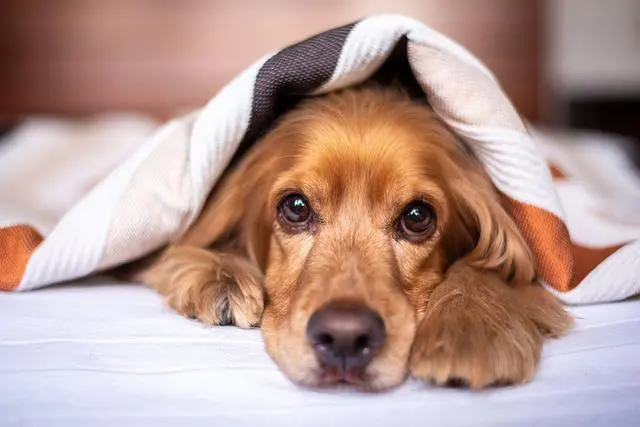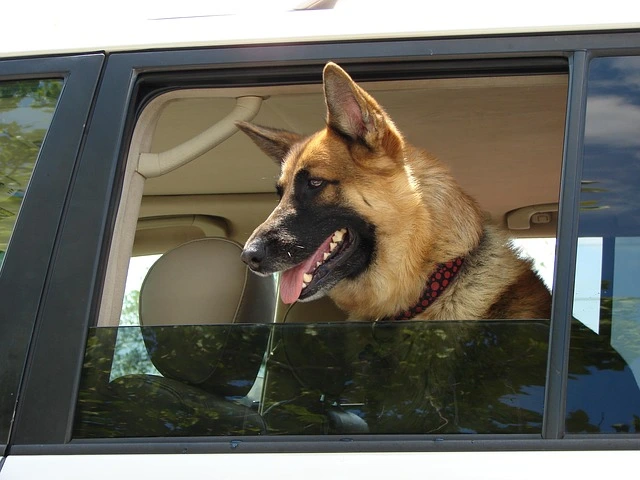10 Tips for Potty Training A Puppy. A 101 Comprehensive Guide.
Potty training a puppy you recently adopted can seem challenging, especially if you are a first-time dog parent. Even though bringing a puppy home and introducing him to your life is accompanied by a euphoric feeling that any canine lover would understand quite well, the training and housebreaking of your pup will require effort and dedication from your side.
To successfully potty train your puppy there are several things to consider and incorporate into your routine. In this article, we will go over all the things you need to know to potty train your pup, so you can have a well-behaved dog that does not soil your home.
Crate Train Your Puppy
Confining your puppy to a small crate may seem like a bad idea to you initially, but it is one of the most important steps in potty training your pup. The concept behind crate training is simple; dogs, like other den animals, seek a sheltered spot for themselves, and if they start to associate their crate with their den, they will keep it clean and not soil it. The key to successful crate training is an appropriately sized crate, the crate in question should not be too small or large, it should allow the puppy to sit, stand, and turn about easily, but any bigger than this may give your pup the idea that he can use one corner of the crate to relieve himself while staying in the clean corner himself.
Your puppy will show signs of agitation like whining or scratching when he has to relieve himself, and observing those signs, you can move him from the crate to the area that you want him to use. Not only will the crate training help with housebreaking your pup, but it will also prove helpful in situations where you have to travel with your dog or take him to his vet.
Remember not to leave your puppy in the small crate for more than two hours at a time, and if you have to keep him confined for longer than that, provide him water and food in his crate.
Indoor Potty Training A Puppy
Although indoor potty training is not recommended, it can come in handy if you live in an extremely cold place, can’t leave your home frequently for walks outside with your dog, or work long hours. Place the puppy pad in one corner and move your puppy on it if he starts to show signs of relieving himself or starts to pee, you can alternatively use several layers of newspaper or a sod box for the dog to use indoors.
Do not let your puppy use any other spot indoors to relieve himself and if he does, place the wipes or rags you used to clean the mess on his puppy pad so he can understand that the puppy pad is the correct place to pee. If the smell inside your house bothers you, you can invest in an indoor puppy bathroom that is easy for the puppy to use and prevents the spreading of foul odor, too.
The problem with allowing your puppy to use an indoor puppy pad is that it incorporates the idea in his brain that it is okay to pee indoors, and this might prove difficult to overcome if you plan on having him do his business outdoors once he grows up. It is better to take your puppy outside to relieve himself if your situation allows it.
Learn how often your dog needs to go
Many dog owners are confused about when to start potty training a puppy, how long it takes to potty train a puppy, and how long are puppies capable of holding their bladder. Knowing the answers to these questions and learning more about your puppy will help you successfully and easily housebreak your puppy.
A puppy younger than twelve weeks does not have the necessary muscles, adequately developed, for holding its bladder; therefore, if you are planning on potty training your puppy, who is younger than 12 weeks old, be prepared for accidents to occur. Generally, a puppy is capable of controlling his bowel and bladder movement for the number of hours corresponding to his age in months, e.g., a 2-month-old puppy can hold his bladder for two hours and so on.
Start potty training your puppy from 12 weeks onwards, go for a small walk outside with your puppy every hour or two, especially after your puppy eats, drinks, has a treat, takes a nap, and before sleeping at night. Potty training a puppy or a dog who has previously been using his crate for elimination might prove to be hard as you will have to break the previous cycle and start from ground zero again.
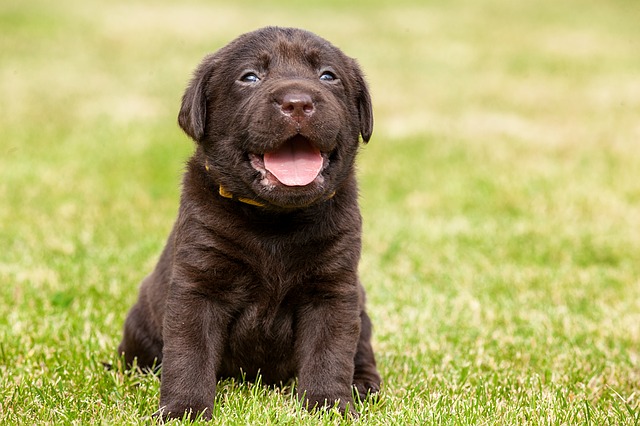
Follow A Training Schedule
The most important thing when potty training a puppy is following a schedule down to the very last detail, the more your actions are consistent the faster your puppy will learn that there is an appropriate place for elimination. As soon as you wake up in the morning, take your puppy out in the backyard so he can relieve himself, be sure to take your puppy out at the same time every day regardless of the days when you want to sleep in, like weekends, because if you break your routine your puppy may start soiling his crate and that habit will be hard to break.
In the beginning, you need to walk your puppy after every meal, nap, or after drinking water or playing with his toys. Playing stimulates their tract and the puppy often feels the urge to go afterward, look for signs like scratching, sniffing, or whimpering, and immediately take them outside if they display any. Take them to the same place every time, so they can start associating that place as the appropriate place to eliminate, and always keep them on a leash when you take them outside.
At night, before sleeping, take your puppy outside to relieve himself and if possible, keep their crate in your bedroom so you can wake up in the morning if he starts to whimper when he wants to empty his bladder, although, due to the lack of activity at night there is a good chance your puppy will be able to hold his bladder till his morning walk.
Potty Training A Puppy if You Work
If you work long hours, away from home, you can hire a part-time pet sitter to take your puppy out for his walks, till your puppy is old and trained enough to wait for you to get back. A 4-month-old potty-trained puppy can stay in his crate for up to 5 hours without creating a mess; although, keep in mind that you should not confine your puppy in a small cage for long periods without letting him out as that can promote aggressive behavior. It is better to get an exercise pen for your puppy, where he can play with his toys and the pen should also contain a potty pad in case he needs to use the bathroom.
You can also try bringing your puppy to your work with you in his crate because for potty training a puppy, following a schedule is the most essential thing and you can’t just let him soil his crate at home for the time you are away, or it might become a habit.
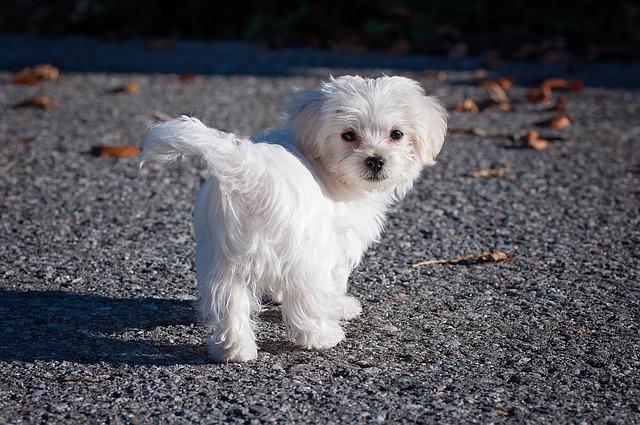
Look for Signs!
The key to potty training your puppy is prevention, act before the puppy soils your favorite rug or sofa. You need to keep an eye on your puppy when playing indoors and recognize the signals he tends to make before relieving himself. Like human babies, puppies also develop at a different pace and pick up things at their speed, some may potty train early on while for others it may take time.
Your puppy will show some signs if he needs to visit the bathroom, it may be barking, scratching, whining, sniffing, squatting, or acting restless and walking around in circles. If your dog is displaying any of these signs, pick him up and take him outside to his spot. You should also move him out if he starts to relieve himself indoors and give him a treat after he has done his business outdoors.
If your puppy is not entirely housetrained, and you fear for the safety of your favorite Persian carpet or your books in your library that your pup might find tasty to chew on, you should get pet doors installed around the specific safe zone where your puppy can play without giving you unnecessary anxiety for the safety of your belongings.
Praise Your Puppy
Positive reinforcement is the best way when potty training your puppy. When you take your puppy outdoors to his specific spot and he relieves himself there, praise him, pet him, and even give him small treats to let him know what a good pup he is for doing his business outdoors, eventually he will learn that eliminating outside will get him loads of love and treats.
Never yell at your puppy or try to punish him if he has an accident indoors. If you see him in the act, stop him by calling his name and carry him outside to his spot, and do not forget to praise him and give him his favorite treat after he is done. You should give him the treat right after he is done with his business, before coming back in, to create a link between the act and the treat, but let your dog get done completely before distracting him with the treat as he may get side-tracked by the treat and soil your home later.
Another thing that can be helpful is repeating a phrase, like “potty time”, every time you take your puppy out for potty so he can learn to associate that phrase with the spot he is supposed to eliminate, that will get him rewarded as opposed to anywhere else.
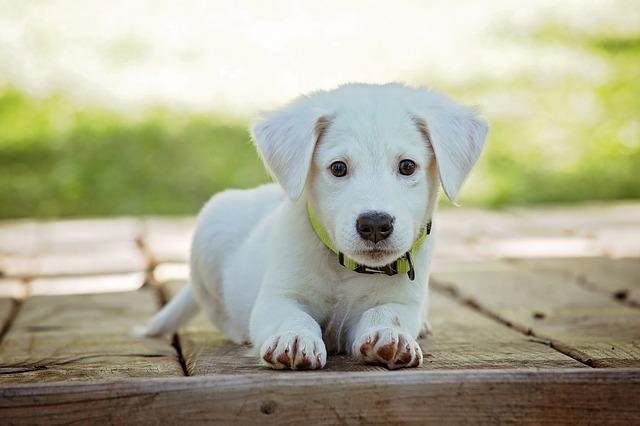
Pay Attention to Your Puppy’s Diet
Try to feed your puppy at the same time every day, as this will help set his bathroom routine too. The younger your puppy is, the sooner you need to take him out for a bathroom break after feeding, but as the puppy grows older, he will be able to control his bladder and bowel movements for a longer period.
A young puppy eats two to three times a day and needs to be taken outside after every meal as they will generally poop soon after eating. Water and treats are also not an exception to this rule, soon after your puppy consumes water or has some treats, take him out to his potty spot if you don’t want him to make a mess at your home.
At night, remove his water bowl about an hour before bedtime, make sure he gets his dinner at least two hours before he turns in for the night and take your puppy out to relieve himself so he will not need to use the bathroom during the night.
What To Do When Mistakes Happen?
Mistakes are a part of the learning process, when adopting a puppy, be prepared for a bit of mess. Do not shout at or punish your puppy if he has an accident inside the house, as that will only cause your puppy to fear you. Rather, learn to deal with the situation in a way that will stop your puppy from making a mess again. The most important thing to do when your puppy soils any spot outside of his puppy pad is clean the spot thoroughly, using detergent or enzymatic cleaner to get rid of any smell that might linger because if a particular spot smells of urine or feces your puppy will be tempted to use that area for relieving himself again.
If you catch your puppy squatting or making a mess inside your house, clap or call his name to get his attention, and then move him outside to complete his business. Accidents are expected to happen in the first year of your pup’s life, but if they continue despite you actively potty training your puppy even after its first year, you should contact a vet or a canine expert as there might be some other psychological or physical problem with your pup.
How Long Does Potty Training A Puppy Take?
Potty training a puppy varies from puppy to puppy, some may be good-tempered and eager to learn and please while some puppies may take some time and persuasion before getting house trained. If you start potty training your puppy from as early as 12 weeks and stick to a regular schedule, loads of walks accompanied by appropriate praises and treats, you can expect your six-month-old puppy to not soil your house but use his own spot for elimination.
There could be several reasons why you may have trouble potty training your puppy, including small-sized dog breeds, as they have smaller bladders, or your puppy may have previously been living in a condition that is making him hard to learn the new habits, whatever the case, be patient and believe in the process, continue with the training schedule and if you still aren’t making any progress, contact your puppy’s vet to check for any reason that could be hindering your pup’s progress.

